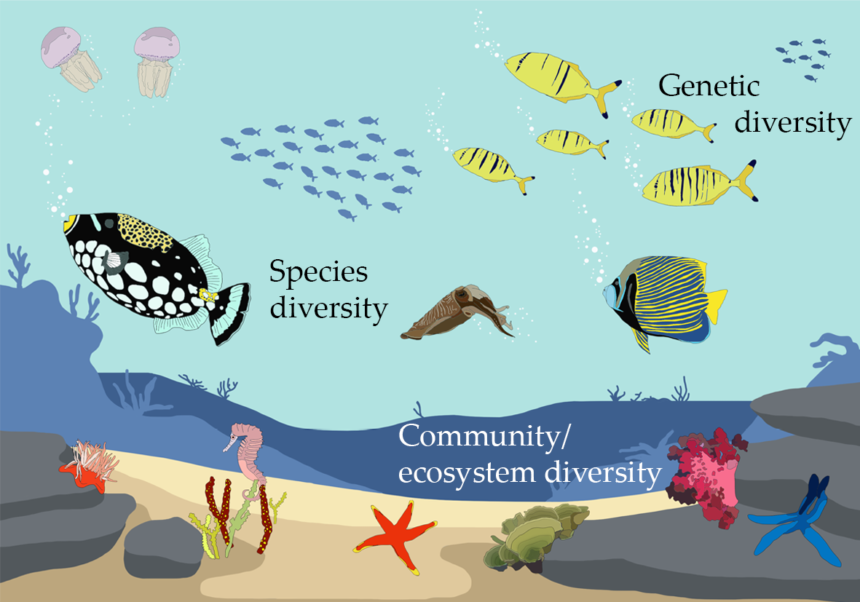Every habitat, from dense rainforests to arid deserts, offers a unique home to the plants, animals, and microorganisms that live there. Together, these habitats form the complex and beautiful natural world we rely on for clean air, water, and countless resources. But with so much variety, how do we keep track of and understand each of these ecosystems? This is where habitat classification comes in. By categorizing habitats, scientists and conservationists can better protect and manage these critical spaces.
Let’s dive into why habitat classification matters, some of the major classification systems used today, and how these tools help in conservation efforts worldwide.
Why Classify Habitats?
Habitat classification creates a shared framework to help ecologists and conservationists talk about and study the natural world. It’s essential for organizing our knowledge of ecosystems, but it also provides practical benefits. With a clear system, conservationists can:
- Identify ecologically valuable areas that need protection
- Track changes in habitats over time
- Develop targeted conservation strategies
- Understand how human activity impacts different habitats
Having a standard classification of habitats makes it easier for everyone involved in conservation—from scientists to policymakers—to prioritize resources and respond effectively to environmental challenges.
Common Habitat Classification Systems
Over the years, scientists have developed several methods for classifying habitats, each with its own approach and purpose. The choice of system often depends on the research focus, location, and level of detail needed. Here are some of the most widely used systems for habitat classification:
- Biome Classification
Biome classification is one of the broadest ways to categorize habitats. Biomes are large-scale ecosystems defined by general climate and vegetation types, like forests, grasslands, deserts, or aquatic zones. Each biome hosts unique communities of life adapted to its specific environment.
Some major biomes include:
- Tropical Rainforest: Known for high rainfall and dense plant life, rainforests support some of the planet’s richest biodiversity.
- Deserts: These arid environments have sparse vegetation, with species specially adapted to extreme conditions.
- Tundra: Cold and often treeless, tundra habitats have short growing seasons and support hardy species adapted to low temperatures.
Biome classification gives us a broad view of Earth’s ecological regions, often serving as a starting point for more detailed studies.
- EUNIS Habitat Classification
The EUNIS (European Nature Information System) Habitat Classification is a system widely used across Europe to categorize terrestrial, freshwater, and marine habitats. Developed by the European Environment Agency, it’s a multi-level system, starting with broad groups and working down to highly specific habitat types.
The EUNIS structure includes:
- Level 1: Broad habitat types (like marine or coastal habitats)
- Level 2: Subcategories within those broad types (such as rocky shores or salt marshes)
- Levels 3 and 4: More detailed levels based on specific ecological characteristics
This system’s flexible approach helps ecologists conduct precise habitat studies and supports conservation planning across different countries in Europe.
- Cowardin Classification System
The Cowardin Classification System, developed by the U.S. Fish and Wildlife Service, is specifically designed for wetland habitats. Wetlands vary widely, so this system breaks them down based on factors like hydrology, soil type, and vegetation.
The five primary habitat types in this system are:
- Marine: Coastal areas affected by ocean tides and salinity
- Estuarine: Transitional areas where saltwater mixes with freshwater
- Riverine: Flowing freshwater systems like rivers and streams
- Lacustrine: Large bodies of standing water, including lakes
- Palustrine: Inland wetlands such as swamps, bogs, and marshes
This system is a gold standard for wetland research and is commonly used throughout North America.
- National Vegetation Classification (NVC)
The National Vegetation Classification is a plant-centered system widely applied in the UK. It organizes habitats based on plant communities and is commonly used in terrestrial and freshwater habitats.
Using detailed surveys of plant species and environmental conditions, the NVC groups habitats by dominant plants and ecological factors. This approach is particularly useful for habitat assessment, conservation planning, and managing protected areas.
- Marine Ecoregions of the World (MEOW)
Marine habitats come with unique challenges, so the Marine Ecoregions of the World (MEOW) classification was developed by The Nature Conservancy and WWF to tackle them. It organizes marine habitats by biogeographic regions influenced by ocean currents, temperature, and species distributions.
The MEOW classification divides the world’s coastal and shelf areas into 232 ecoregions, grouped into 62 provinces and 12 larger realms. This system helps marine biologists focus on high-priority areas for conservation and track biodiversity in the world’s oceans.
Remote Sensing and Technology in Habitat Classification
Thanks to advancements in remote sensing and technology, habitat classification has become more detailed and accessible. Satellite imagery, aerial photography, and geographic information systems (GIS) offer powerful tools to map and monitor habitats on a large scale. These tools allow scientists to analyze vegetation cover, land use, and even water quality, often in real time.
For example, with remote sensing, ecologists can monitor deforestation, observe wetland changes, and track coastal habitat shifts due to rising sea levels. Technology also makes it easier to study habitats in remote or hard-to-access areas, contributing invaluable data to global conservation efforts.
Challenges in Habitat Classification
Despite its importance, classifying habitats isn’t always straightforward:
- Diverse Ecosystems: Natural boundaries don’t always line up neatly. Habitats often overlap, creating transitional zones.
- Scale of Study: Some systems work better on a broad scale, while others are more effective for local studies.
- Human Impact: Urbanization, agriculture, and pollution change natural habitats, making it difficult to apply standard classifications.
Still, habitat classification remains a key tool for managing and preserving the natural world.
Applications and Benefits of Habitat Classification
Habitat classification is foundational to conservation work, helping researchers and policymakers protect ecosystems more effectively. Some ways this work is applied include:
- Identifying Biodiversity Hotspots: Classification helps conservationists target areas with high biodiversity for preservation.
- Ecological Restoration: With a clear understanding of habitat structure, ecologists can restore degraded areas more effectively.
- Tracking Climate Change Impacts: Classification helps scientists track shifts in habitats due to changing climates, such as species moving to new areas.
- Guiding Policy and Land Use Planning: Habitat classification supports sustainable land use policies that balance development and conservation.
Conclusion: Why Habitat Classification Matters
Habitat classification is about more than putting labels on nature—it’s about understanding the complex relationships within ecosystems. By categorizing habitats, scientists and conservationists can prioritize conservation efforts and respond quickly to environmental changes. Each system, from biomes to marine ecoregions, provides a different lens for understanding the world around us.
With the many pressures facing our natural habitats, the role of habitat classification has never been more crucial. It helps us keep track of Earth’s incredible diversity, giving us the knowledge needed to protect it for the future.


